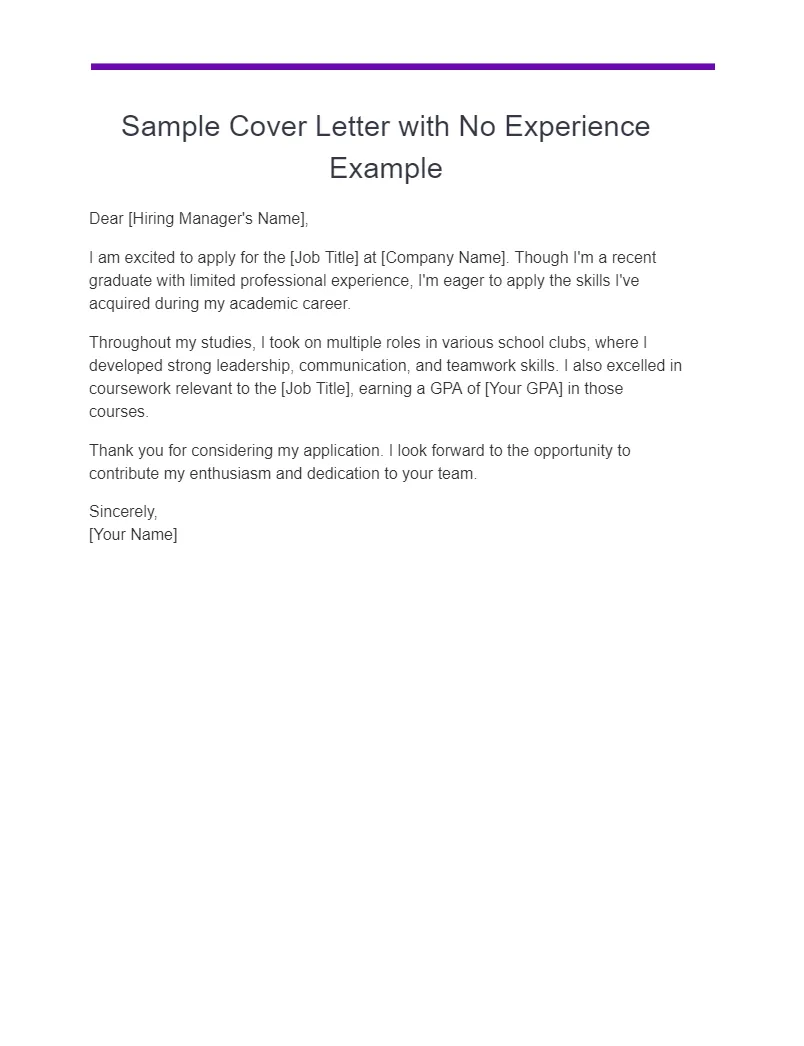Understanding the Purpose of a Cover Letter
A cover letter serves as your introduction to a potential employer, offering a glimpse beyond the confines of your resume. Its primary purpose is to persuade the hiring manager that you are a strong candidate, even if you lack direct experience. It’s a chance to articulate your interest in the specific role and company, highlighting your relevant skills, experiences, and personality traits. Moreover, a well-crafted cover letter demonstrates your communication skills and attention to detail, which are crucial for any professional setting. It provides context to your application, helping the employer understand how your background aligns with their needs and expectations. A compelling cover letter can significantly increase your chances of landing an interview, especially when you’re starting out or transitioning careers. Think of it as a personalized sales pitch, showcasing your value proposition and encouraging the reader to learn more about you.
Why a Cover Letter is Crucial (Especially With No Experience)
When you have limited or no professional experience, a cover letter becomes even more critical. It provides the opportunity to explain why you are a suitable fit, despite the lack of a traditional work history. It allows you to address any concerns the employer might have regarding your inexperience and provides a platform to highlight transferable skills gained from other experiences, such as volunteer work, academic projects, or extracurricular activities. The cover letter enables you to articulate your career goals and enthusiasm for the position, demonstrating your commitment and willingness to learn. Furthermore, it showcases your personality and communication style, helping you stand out from other candidates who may also have limited experience. By using the cover letter strategically, you can transform a perceived disadvantage into a strength, emphasizing your potential and adaptability, which are highly valued by employers.
Highlighting Transferable Skills
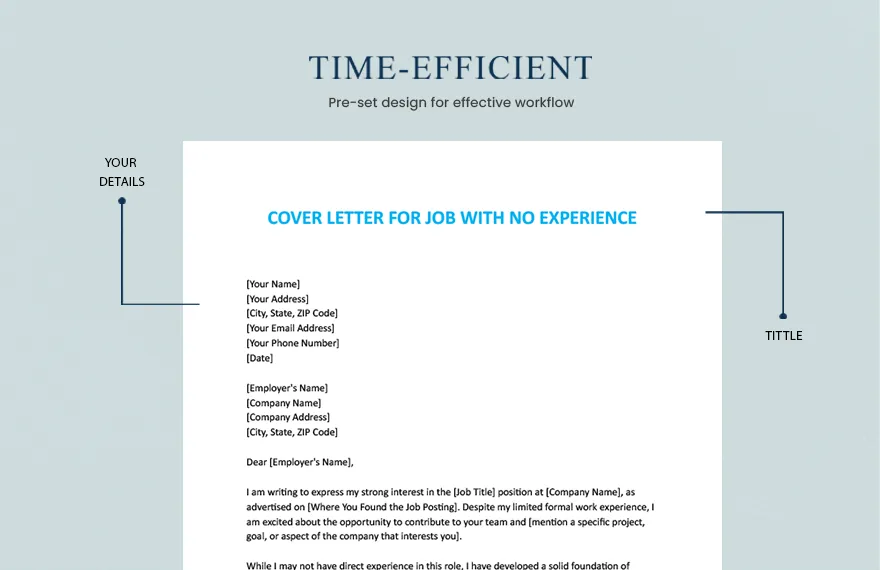
Transferable skills are abilities you’ve developed in one context that are applicable in another. Identifying and showcasing these is key when writing a cover letter without direct experience. Think about skills such as communication, teamwork, problem-solving, time management, and leadership. These are highly valued across industries and can be demonstrated through various experiences, even if they are not work-related. For instance, if you’ve led a student project, you can highlight your project management skills and ability to motivate a team. Similarly, volunteer work might demonstrate your commitment, empathy, and ability to work with diverse groups. The goal is to translate your skills from different aspects of your life into qualities that align with the job requirements. Focus on how these skills have benefited you in the past and how they can contribute to the success of the company.
Identifying Your Relevant Skills
Start by carefully analyzing the job description. Identify the key skills and qualifications the employer is seeking. Then, assess your own skills and experiences. What abilities align with those requirements? Think broadly. Consider soft skills, like communication and problem-solving, and technical skills, such as specific software proficiency or analytical abilities. Make a list of these relevant skills and note where you’ve demonstrated them. This might include coursework, volunteer activities, personal projects, or extracurricular involvement. Be specific. Instead of simply stating that you are a good communicator, give an example of how you’ve used communication skills to achieve a specific goal. This will make your claims more credible and help you tailor your cover letter to the particular job.
Showcasing Soft Skills
Soft skills are essential for success in any role. They encompass your interpersonal abilities, work ethic, and personal attributes. Examples include communication, teamwork, adaptability, problem-solving, and time management. Highlighting these skills is particularly important when you lack direct experience, as they demonstrate your potential to learn and succeed. Use specific examples to illustrate your soft skills. For example, instead of saying “I am a good team player,” describe a situation where you collaborated effectively with others to achieve a common goal. Quantify your achievements whenever possible. If you improved team efficiency, mention the percentage or the impact you had. This provides concrete evidence of your abilities and makes your cover letter more persuasive. Tailor the skills you emphasize to align with the requirements of the job description, highlighting the ones most relevant to the position.
Formatting Your Cover Letter for Maximum Impact
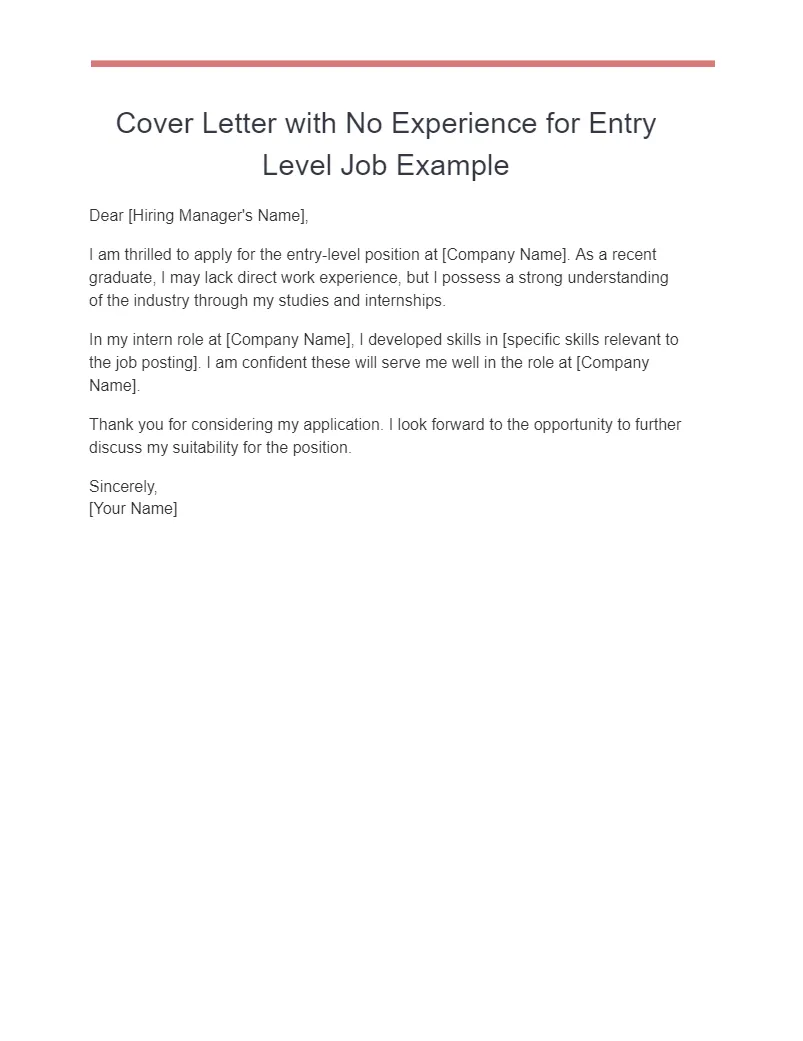
The format of your cover letter is just as important as its content. It should be clean, professional, and easy to read. Use a standard business letter format, including your contact information, the date, and the recipient’s details. Choose a professional font, such as Times New Roman, Arial, or Calibri, and maintain a consistent font size (11 or 12 points). Use single spacing within paragraphs and double spacing between paragraphs. This creates visual clarity and allows the reader to easily scan the document. Keep the letter concise, aiming for a maximum of one page. Avoid overly lengthy paragraphs and break up text with bullet points or short sentences. Proofread the letter carefully for any errors in grammar, spelling, or punctuation. A well-formatted and error-free cover letter demonstrates your attention to detail and professionalism, which are crucial for making a positive impression.
Contact Information and Salutation
Begin your cover letter with your full name, address, phone number, and email address. This information should be clearly displayed at the top of the letter. Include the date below your contact details. Then, add the hiring manager’s name and title, along with the company’s address. If you can’t find the hiring manager’s name, research the company’s website or LinkedIn. Addressing the letter to a specific person shows that you’ve taken the time to learn about the company and the role. Use a formal salutation, such as “Dear Mr./Ms./Mx. [Last Name]”. If you are unsure of the person’s gender, you can use their full name or the more general “Dear Hiring Manager”. This personalized touch immediately sets your letter apart and demonstrates your professionalism and attention to detail.
Crafting a Compelling Opening
Your opening paragraph is your first opportunity to grab the reader’s attention. It should be concise, engaging, and clearly state the purpose of your letter. Avoid generic openings like “I am writing to express my interest…” Instead, try to personalize your opening by mentioning something specific about the company or the role. For example, you could reference a recent project, a company value that resonates with you, or a specific aspect of the job description. Briefly state the position you are applying for and how you learned about it. Then, immediately highlight one or two key skills or experiences that make you a strong candidate, even without direct experience. This approach sets a positive tone and encourages the reader to continue reading, demonstrating your value from the outset and setting the stage for the rest of your cover letter.
Demonstrating Enthusiasm and Interest

Expressing genuine enthusiasm for the role and the company is crucial, particularly when you lack experience. This shows that you are motivated and eager to learn. In your cover letter, explain why you are drawn to the specific position and what excites you about the company’s mission, values, or products. Research the company thoroughly and mention any specific aspects that resonate with you. This demonstrates your genuine interest and sets you apart from candidates who may be applying for multiple jobs. Tailor your letter to each application by referencing specific company initiatives, recent news, or the company’s culture. This shows that you have taken the time to understand the company and the role, increasing your chances of making a positive impression and signaling your commitment to learning and growing with the company.
Body Paragraphs Focused on Value
The body paragraphs of your cover letter are where you showcase your value and demonstrate how your skills and experiences align with the job requirements. Focus on the most relevant skills and experiences, highlighting how they translate to the responsibilities of the role. Use the STAR method (Situation, Task, Action, Result) to provide specific examples that illustrate your abilities. Start by describing the situation or context. Then, explain the task you were assigned. Detail the actions you took to address the task, and finally, describe the results of your actions. This structured approach provides concrete evidence of your capabilities and makes your cover letter more compelling. Quantify your achievements whenever possible. For example, if you improved efficiency, mention the percentage or the impact you had. This further demonstrates your value and leaves a lasting impression on the hiring manager.
Connecting Skills to Job Requirements
Carefully review the job description and identify the key skills and qualifications the employer is seeking. In your body paragraphs, explicitly connect your skills and experiences to these requirements. Instead of simply listing your skills, explain how they relate to the job duties. For example, if the job description requires strong communication skills, provide an example of how you’ve effectively communicated in a team or presented to a group. If the job requires problem-solving skills, describe a situation where you identified a problem, developed a solution, and implemented it. Show the employer how your skills will contribute to the company’s success. Use the language from the job description to reinforce your points. This targeted approach demonstrates your understanding of the role and your ability to meet the employer’s needs.
Quantifying Achievements (Even Without Direct Experience)
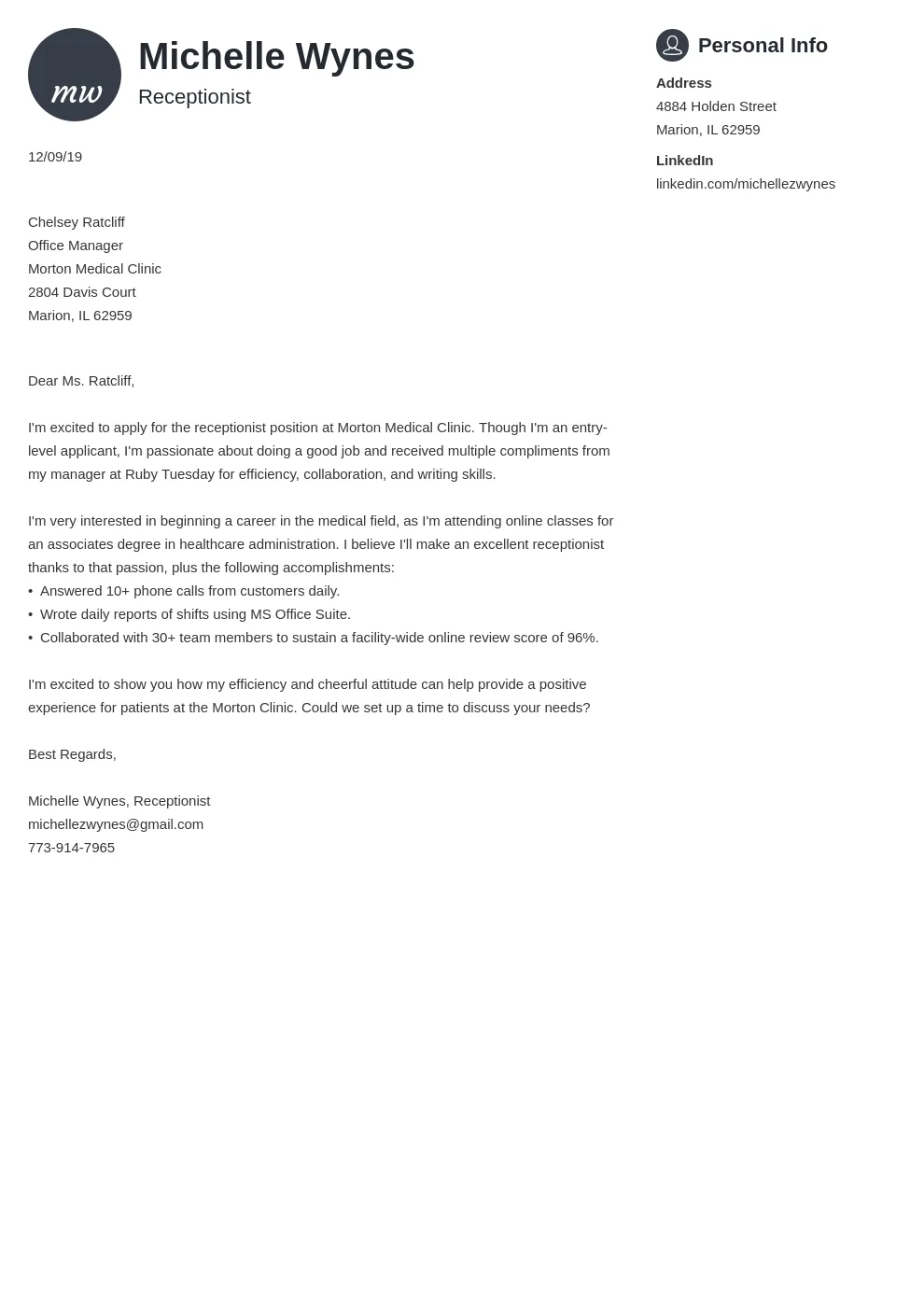
Even without direct experience, you can quantify your achievements by using metrics and specific results from your academic projects, volunteer work, or extracurricular activities. Whenever possible, provide numerical data to demonstrate the impact of your actions. For instance, if you improved the efficiency of a project, mention the percentage or the time saved. If you raised funds for a cause, specify the amount you raised. If you led a team, mention the number of members and the accomplishments of the team. These figures provide concrete evidence of your skills and make your cover letter more persuasive. If you don’t have hard numbers, use descriptive language and focus on the results. For example, you can describe how your actions led to increased engagement, improved customer satisfaction, or enhanced brand awareness. This attention to detail demonstrates your ability to achieve results and add value, regardless of your experience level.
Closing Your Cover Letter Effectively
Your closing paragraph is your final opportunity to make a positive impression. It should be concise, professional, and leave the reader with a clear call to action. Thank the hiring manager for their time and consideration. Reiterate your interest in the position and restate why you are a strong candidate. Express your eagerness to learn more about the opportunity and provide your contact information for easy communication. Make it clear that you are available for an interview and willing to discuss how your skills and experiences can benefit the company. Avoid generic closings such as “Sincerely”. Instead, opt for a more personalized and enthusiastic closing, such as “I am excited about the prospect of contributing to your team” or “I look forward to the opportunity to discuss my qualifications further”. This positive closing will make a lasting impression and increase your chances of getting an interview.
Expressing Gratitude and Next Steps
Expressing gratitude is a crucial part of the closing. Thank the hiring manager for considering your application and taking the time to read your cover letter. This shows respect and professionalism. After expressing gratitude, clearly state your next steps. Let the hiring manager know that you are available for an interview and eager to discuss your qualifications further. Provide your contact information again to make it easy for them to reach you. You might also mention any specific details about your availability, such as your preferred method of contact or the best times to reach you. This proactive approach demonstrates your enthusiasm and commitment to the role and encourages the hiring manager to take the next step in the hiring process. Ensure your call to action is clear and concise and matches the tone of the rest of your letter.
Proofreading and Editing
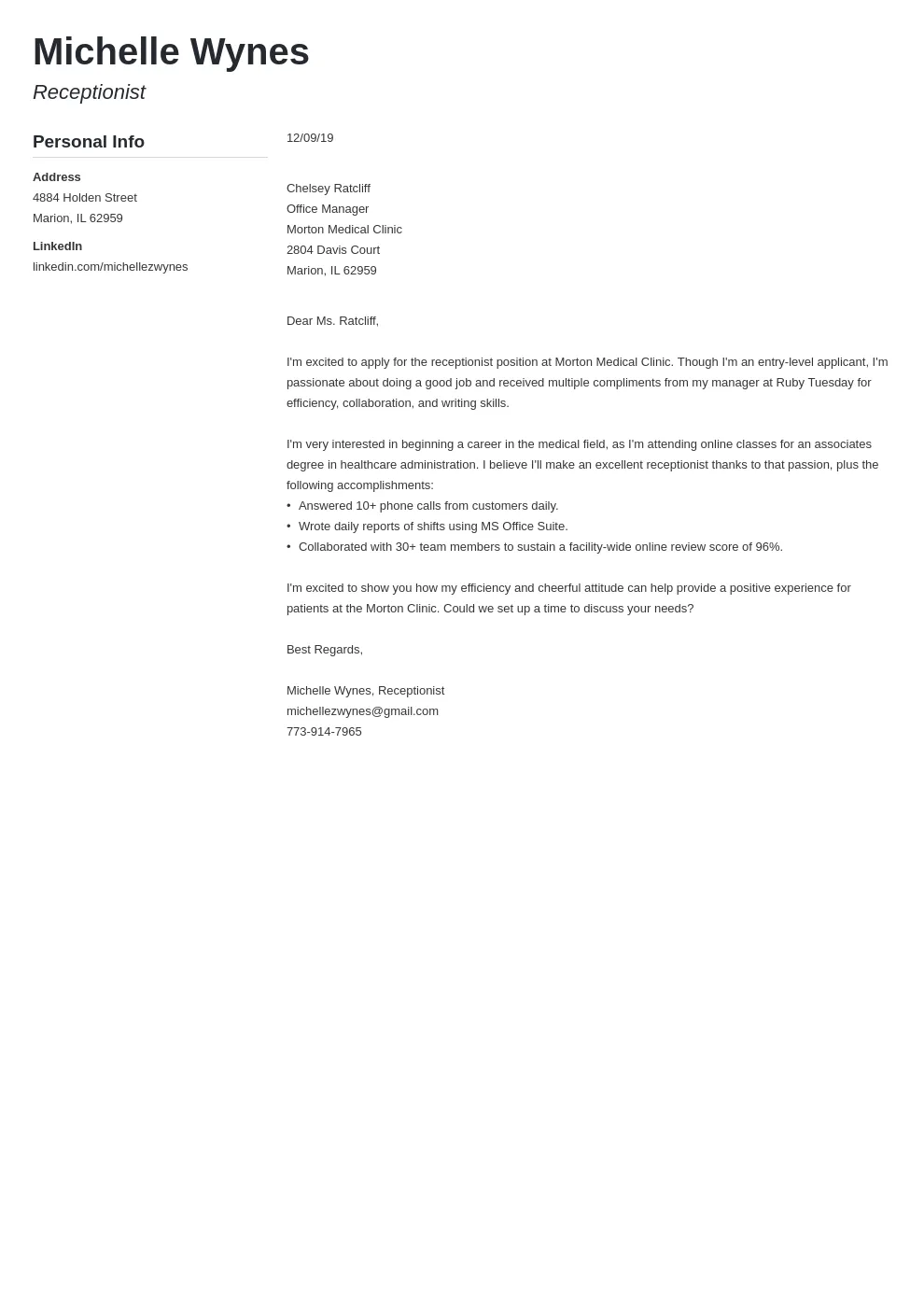
Proofreading and editing are essential steps in ensuring your cover letter is polished and professional. Before submitting your cover letter, carefully review it for any errors in grammar, spelling, punctuation, and formatting. These mistakes can detract from your credibility and make a negative impression on the hiring manager. Read your cover letter aloud to catch any awkward phrasing or sentence structure issues. Ask a friend, family member, or career counselor to review your cover letter for feedback. A fresh pair of eyes can often spot errors that you might have missed. Make sure your cover letter is tailored to the specific job and company. Double-check that all the information is accurate and that your contact information is correct. A well-proofread and edited cover letter demonstrates your attention to detail and commitment to excellence, increasing your chances of making a positive impression.
Avoiding Common Mistakes
Several common mistakes can undermine the effectiveness of your cover letter. Avoid generic cover letters that are not tailored to the specific job or company. Employers can easily tell when a cover letter is mass-produced. Focus on highlighting your skills and experiences and how they relate to the job requirements. Avoid repeating information that is already in your resume. Instead, use the cover letter to expand on your qualifications and provide additional context. Avoid using overly casual or informal language. Keep the tone professional and appropriate for a business setting. Avoid negative language or self-deprecating statements. Focus on your strengths and potential rather than dwelling on your lack of experience. Most importantly, avoid typos, grammatical errors, and formatting inconsistencies. These errors reflect poorly on your attention to detail. By avoiding these common pitfalls, you can significantly increase the effectiveness of your cover letter and your chances of getting an interview.
Generic vs. Tailored Cover Letters
Generic cover letters are often ineffective. They are not tailored to the specific job or company, and they can come across as impersonal and unenthusiastic. Instead, always aim to write tailored cover letters that demonstrate your genuine interest in the specific role and the company. Research the company and the job description thoroughly. Customize your cover letter to highlight the skills, experiences, and qualifications that align with the job requirements. Mention specific aspects of the company that resonate with you, such as its mission, values, or recent projects. This shows that you have taken the time to understand the company and the role. Tailoring your cover letter demonstrates your attention to detail, your commitment to the job, and your eagerness to contribute to the company’s success. Always tailor your cover letter for each application, even if it requires more effort. The investment in time will pay off.
Cover Letter Length
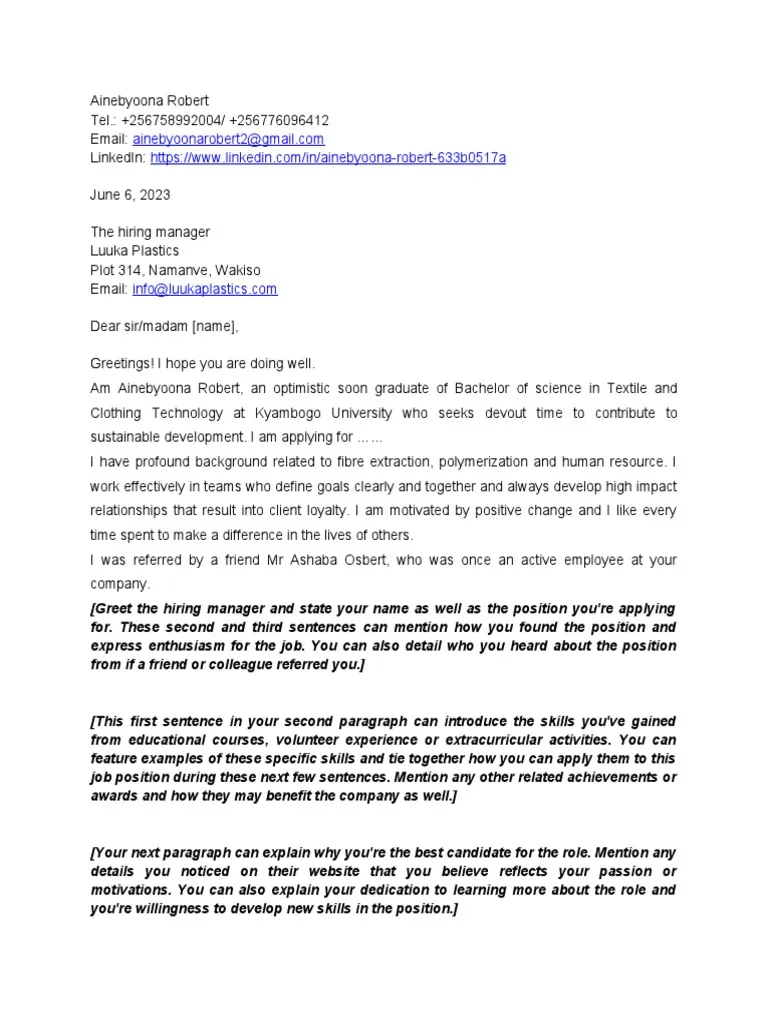
A cover letter should typically be one page long. This allows you to provide a concise and compelling overview of your qualifications without overwhelming the hiring manager. If you have a lot of experience, it might be tempting to include everything. But resist the urge to exceed the one-page limit. Focus on the most relevant skills and experiences and tailor your letter to the specific job requirements. Keep the paragraphs concise and easy to read. Use clear and direct language to get your message across quickly. A shorter, well-written cover letter is more likely to capture the hiring manager’s attention. Make every word count and avoid unnecessary details. Prioritize the most important information, which is your skills, enthusiasm, and how you can contribute to the company’s success.
Leveraging a Strong Portfolio
A strong portfolio can be a valuable asset, especially when you lack direct experience. A portfolio is a collection of your work that demonstrates your skills, creativity, and accomplishments. Depending on your field, your portfolio might include writing samples, design projects, code repositories, or other relevant materials. If you have projects, academic work, or volunteer experiences that showcase your skills, consider including them in your portfolio. Ensure that your portfolio is well-organized, easy to navigate, and visually appealing. Provide clear descriptions of each project and explain your role and contributions. Link to your portfolio in your cover letter and resume. Refer to specific items in your portfolio when discussing your skills and experiences. This will give the hiring manager a more comprehensive understanding of your capabilities and help you stand out from other candidates, even those with more traditional experience.
Tailoring Your Cover Letter for Each Application
The key to writing a successful cover letter, especially when you lack experience, is tailoring it to each specific job. Do not reuse a generic cover letter for multiple applications. Instead, treat each application as a unique opportunity to demonstrate your value. Before you start writing, carefully review the job description and identify the key skills, qualifications, and responsibilities. Research the company and understand its mission, values, and culture. Use the job description and your research to customize your cover letter. Highlight the skills and experiences that align with the job requirements. Mention specific aspects of the company that resonate with you and show that you understand its goals. Tailor your language and tone to match the company’s brand and culture. By personalizing each cover letter, you demonstrate your genuine interest in the role and increase your chances of making a positive impression. This effort sets you apart from other applicants and positions you as a strong and suitable candidate.
